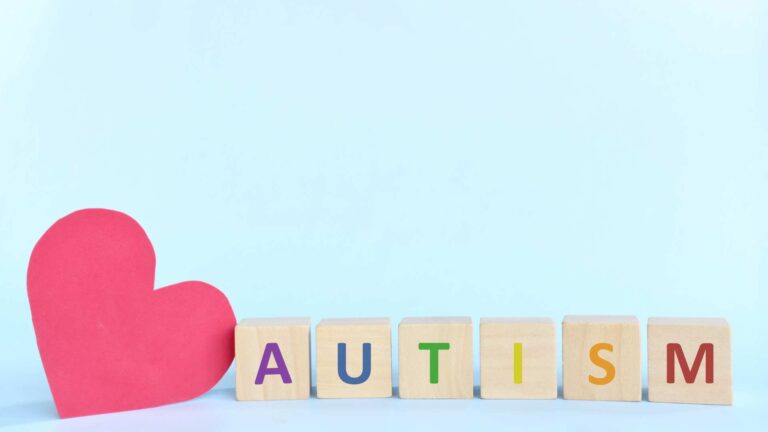Applied behavior analysis (ABA) therapy is a widely-encompassing approach to autism care with many facets and systematic techniques. Based on core principles of behavior and learning, ABA therapy utilizes 7 foundational principles that help improve the lives of those with autism spectrum disorder (ASD). So, what are the 7 dimensions of ABA, and how do they enhance an individual’s life? The question is common for many and certainly warrants a closer examination.
Texas ABA Centers employs these 7 dimensions in all forms of our ABA therapy services for children and teens. Our approach to autism care is backed by decades of research and analysis, ensuring your child reliably develops beneficial behavioral, social, and learning skills. Let’s answer the question, “What are the 7 dimensions of ABA therapy?” and explain how they work in theory and practice.
What is Applied Behavior Analysis (ABA) Therapy?
ABA therapy is an evidence-based approach to autism treatment that helps individuals learn significant behaviors while reducing those that hinder learning or social growth. Autism professionals, such as Registered Behavior Technicians (RBTs) and Board Certified Behavior Analysts (BCBAs), learn how these variables influence behavior and use these dimensions to create strategies that foster independence.
One of the most appealing components of ABA therapy is the tailored and comprehensive approach technicians use when creating treatment plans. RBTs and BCBAs observe and learn your child’s behavioral patterns, social interactions, and learning capabilities.
They use this data to forge a program that keeps your child’s best interests at the forefront. No two ABA treatment plans are the same, which allows children and teens to develop valuable life skills at their own pace. However, while these plans vary in their approach, every single one applies these 7 core dimensions of ABA.
Breaking Down the Methods: What Are the 7 Dimensions of ABA?
A 1968 article by some of the foundational ABA researchers in the field of autism was the first to coin these dimensions of ABA. The authors used these to characterize the seven criteria BCBAs should consider when creating meaningful change in individuals on the spectrum. These dimensions include:
- Generality
- Technological
- Applied
- Conceptually Systematic
- Effective
- Analytic
- Behavioral
Below is a complete breakdown of each dimension and its role in applied behavior analysis.
Generality – In the context of ABA therapy, the term ‘generalizing’ denotes that an individual has learned and maintained a skill over an extended period and can now apply it to various people and settings. Neurotypical people generalize these skills through exposure and often don’t require additional training or support when learning these skills.
This process is different for those with ASD; learning and generalizing these skills is often challenging and requires extra effort and support. Think of concepts such as turn-taking, learning letters or colors, or even simple daily tasks like teeth brushing and showering – these skills that usually develop naturally over time instead prove difficult to someone with autism.
For this reason, a core principle of ABA therapy is teaching individuals with ASD how to generalize skills and concepts. For example, a BCBA may present a picture of a chihuahua to your child, followed by an image of a husky, to show them that multiple types of dogs exist. Through this awareness of alternatives, children with ASD can become more conscious of different settings and possibilities.
Technological – Developing an effective strategy plan requires techniques and instructions that are easy to understand and implement. The technological dimension of ABA encompasses this concept. The easiest way to understand its role is to consider that when behavior intervention is technological, these approaches are simple to replicate, and integrity remains high across all providers of ABA therapy.
Applied – In ABA therapy, treatments must be socially significant to meet ABA’s ‘applied’ dimension – meaning, teaching a child how to yodel doesn’t meet the social significance of teaching them to address a stop sign and look both ways before crossing the street. The behavioral skills targeted in ABA therapy are deemed necessary to the individual and their family. They help the child or teen function appropriately within their environment, society, and setting, adding considerable value to their life.
Conceptually Systematic – Conceptually systematic programs are based on core principles of applied behavior analysis. For instance, ABA therapy must always include reinforcement since reinforcement is one of the critical pillars of behavior analysis. To fully embrace this dimension, ABA practitioners ask themselves, “Is this intervention consistent with the principles of clinical ABA research?
Effective – This dimension is amongst the most important in ABA therapy, especially in the services we provide at Texas ABA Centers. A tailored and comprehensive approach based on the client’s passions, priorities, skill sets, and unique character is the only way for a treatment program to prove effective.
An effective approach to ABA therapy caters to these characteristics. Since the primary goal of this autism care is to create independence so clients can be themselves within their community, ABA therapy must foster a way to make that individual ‘be themselves.’ Every child with autism is different and learns at their own pace.
Analytic – BCBAs and RBTs continuously analyze data before, during, and after ABA therapy sessions. They collect this data based on observations during sessions and use it to find patterns and correlations in behaviors and environments. By identifying these patterns, technicians can track progress, highlight areas of improvement, and create interventions to decrease challenging behaviors by reinforcing appropriate ones.
It would be a waste of time and resources for technicians to track these observations without analytical data to match. Again, applied behavior analysis is systematic, and much of this data follows a regimented system established decades prior.
Behavioral – The only way to change a behavior is by observing and measuring it using data. What’s important to remember is that the term ‘behavior’ does not equate to ‘good’ or ‘bad.’ Instead, BCBAs and other technicians will increase some behaviors while decreasing others. The term ‘behavior change’ also refers to how the alterations impacted the child’s life, rather than their behavior simply changing.
Why Are These 7 Dimensions of ABA Essential for Long-Term Success?
The 7 dimensions of ABA therapy are essential for long-term success in individuals with autism since they form the foundation of a comprehensive and tailored approach to autism care; this enables experts to utilize transparent and replicable techniques, target socially significant behaviors, adhere to core principles of behavior analysis, and customize interventions based on individual needs to bring meaningful behavior change.
By incorporating these dimensions, ABA therapy maximizes the potential for long-term success, empowering individuals with autism to acquire valuable skills and thrive in various aspects of their lives.
See These Dimensions in Action at Texas ABA Centers
Our team of experts at Texas ABA Centers works tirelessly to provide reliable, comprehensive, and tailored ABA therapy programs to children and teens who need extra support developing necessary life skills. If you’re considering ABA therapy for your child, reach out to us for a free consultation where you can learn all the information you need.
Contact us at (877) 771-5725 or visit our website.








